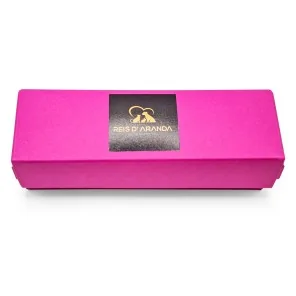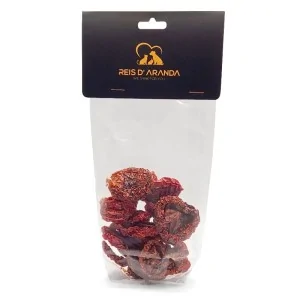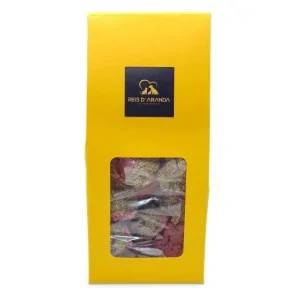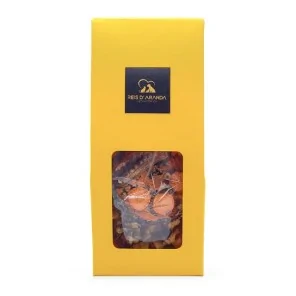The Tornjak originated from genetically homogeneous, almost extinct, indigenous shepherd dogs. These dogs have...
THE FRENCH BELIER RABBIT
INTRODUCTION
The French Belier rabbit is a breed of domestic rabbit that developed in France in the 19th century from the selective breeding of English Lop and Flanders Giant rabbits. The French Belier rabbit resembles the English Lop rabbit, but is heavier in stature and does not have the exaggerated ear length of the English Lop rabbit.
The French Belier rabbit is currently recognised by the American Rabbit Breeders Association (ARBA) and the British Rabbit Council (BRC). In Spain they are recognised by AECCE, ASNAC and the former CECR.
THE ORIGIN OF THE FRENCH BELIER
The purpose of the development of the French Belier rabbit was to create a superior meat breed. To achieve this, a breeder decided to cross the English Lop and the Flanders Giant. However, there were probably a few other breeds involved in the creation of this breed.
Since all this happened in the 19th century, we really don't have much information about the actual breeds that were developed, because nobody kept that many records at that time. What we do know, however, is that the French Belier rabbit started to become quite popular in the late 19th century as a show rabbit.
This is partly due to the fact that the Victorians were really starting to love fancy rabbit breeds at that time. Then someone marvelled at the appearance of the Lop (Belier) rabbit in France (being a French rabbit was also popular at the time) and imported it to the UK.
At first, it was just a small breeding group, but eventually, everyone wanted a French Belier rabbit, so there was a rapid amount of breeding in the UK from the late 19th century to the early 20th century.
WHAT DOES THE FRENCH BELIER LOOK LIKE?
WEIGHT: As large as possible.
- Minimum adult weight: 4.535 kg.
There is no maximum weight for adults or under 5 months.
1. TYPE - Massive, thick and firm. The body should be short, broad and well muscled, with little visible neck. The topline rises in a curve to a well muscled, short and well rounded croup. The chest is broad and deep providing curved sides where it meets the shoulders, which are broad and strong. The forelegs are thick, short and straight. The legs are short, strong, powerful and the hind legs carried parallel to the body. The tail is straight, strong and well furred. A small dewlap is permissible in fallow deer but not favourable - larger dewlap in females.
2. HEAD, CROWN, EARS AND EYES:
- HEAD- Well developed particularly in fallow deer. Good width between eyes. Full cheeks and broad muzzle desirable.
- CROWN- The basal ridge of the ears should appear prominent along the top of the skull.
- EARS - Should be broad, thick, well furred and rounded at the ends. They should be carried close to the cheeks, giving a horseshoe-like outline when viewed from the front. The inside of the ears should not be visible from any angle when carried correctly. Ears are not measured.
- EYES- Round and bright.
3. HAIR- Coiled, dense with many guard hairs. Paws and pads well covered with hair.
4. CONDITION - Condition should be firm and sound.
FAULTS: Poor muscling, lack of firmness, loose skin on hind legs. Body too long and/or too lean. Head not sufficiently characteristic of the breed. Ears not sufficiently characteristic of the breed. Poorly carried ears. Undeveloped crown. Hair drooping. Legs arched or splayed. Excessive white hairs in coloured shows, white tail in brindled fawn (excessive white hairs on nose and upper lip apply to butterfly shows).
DISQUALIFICATIONS: Adult weight less than 4.535kg (10lb). Malocclusion of teeth. White nails in coloured shows. Long, grainy nose.
OWN COLOURS:
- WHITE- As pure white as possible. Eyes ruby red or blue.
- BLACK - A deep, lustrous solid black reaching well into the skin with blue or slate undercolour. Dark hazel or black eyes.
- CHOCOLATE- Dark brown reaching well into the hair shaft. Slate blue undercolour. Brown eyes.
- BLUE- Deep, solid slate blue running well down the shaft of the hair. Dark blue eyes.
AGOUTI PATTERN:
- AGOUTI- A deep chestnut shade with black ticking over an intermediate orange band and dark slate undercolour. The belly and underside of the tail are white with a slate undercolour.
- SQUIRREL - The undercolour shall be dark slate blue at the base, the middle portion pearl (the slate shall be wider than the pearl) with a clearly defined black border of narrow lines. The upper portion bright grey ticked with black hairs. Uniform or wavy ticking is permissible. Lighter neck coat.
- OPAL- Pale blue upper colour over a tawny intermediate band and slate undercoat. Belly colour white with slate undercoat.
SHADOWED:
- SOOTY (MADAGASCAR) - Intense orange colour gradually changing to blue/black on flanks, haunches and belly. Blue/black ‘points’. Upper colour should go well under the coat with a bluish white undercolour.
- SIAMES SABLE-
--MIDDLE: Deep sepia colour on ears, face, back, outer side of legs and top of tail, descending to a paler undercoat. The saddle should run well down the flanks, shading to a paler colour on the underside of the flanks and belly. The dark colours should fade from the eyes to the jaw, to blend into the chest and flanks. The dark colour on the back should extend to the tail. The chest should be the same colour as the flanks. All blending should be gradual to avoid spotting. The eyes should have a distinct ruby sheen.
--CLEAR: As medium, but deep sepia in colour.
--DARK: As medium, but the colour should be very deep dark sepia.
ANY OTHER COLOUR:
- ORANGE- Rich orange free from tintinnabulation. Belly white. Undercolour white or cream. Hazel eyes.
- FAWN- Bright golden fawn well carried on the flanks, shading to a white undercoat. The colour should run well down the coat with a white undercolour. Excessive black/blue guard hairs are a fault.
- STEEL- Steel grey blending into a slate blue undercolour. All interspersed with black guard hairs. The extreme tips of the coat should be steel blue or grey. The mixture should extend well over the flanks and hind legs. The colour of the belly shall be a lighter shade varying with the colour of the top coat, the undercoat to match the colour of the belly. Ears to match the body, eyes of a deep hazel.
- BUTTERFLY- Pattern to be white and any other colour permitted. White markings around the nose to be such as to leave a distinct butterfly blight or like shading in sooty-fawn. The ears should be coloured. The white should extend upwards from the chin and chest over the shoulders with two patches one on each side on the shoulders called shoulder patches. A small ‘V’ on the shoulders is permissible. There should be no white in the general colouring of the body. The belly should be white but nipple patches are permissible. White on the nose or blight is a pattern fault.
FAULTS - Too many white hairs on nose and upper lip.
DISQUALIFICATIONS - Putty nose.
ANY OTHER COLOUR - Any colour or pattern conforming to the colour or pattern of the recognised breeds, with the exception of the broken and mantle pattern.
THE HEALTH OF THE FRENCH BELIER
The French Belier is a generally healthy breed, with no known cases of genetic malocclusion or frequent otitis. The most common diseases are obesity and pododermatitis due to obesity.
THE PERSONALITY OF THE FRENCH BELIER
The French Belier is a peaceful breed but due to its size it must be socialised properly as its paws can do a lot of damage. They are good for families with older children (10 years and upwards), although they are not recommended for novice owners due to their strength and size.
CONCLUSION
The French Belier is a little known breed that is often confused with a ‘Dwarf Belier’ because many rabbit enthusiasts or protectionists do not know the difference. His massive build and strong hind legs should be treated with care and if we work on his socialisation he will make a fantastic pet and companion.
Leave a comment
Log in to post comments
















